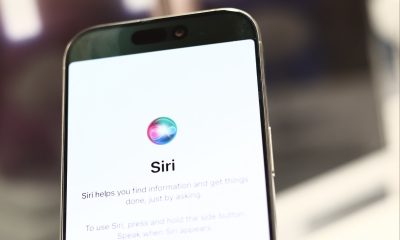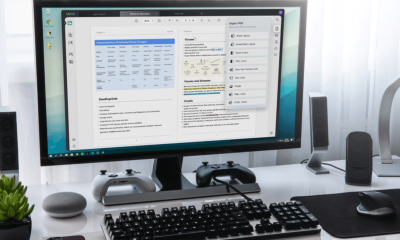Personal Finance
Goodbye match, hello retirement benefit account? What IBM 401(k) change means

Tech giant IBM will replace its 401(k)-matching program with a different kind of benefit that many employees and financial advisors worry will dampen retirement savings and become the norm.
In a memo to U.S. employees last week, IBM said it’s switching its 5% 401(k) match and 1% automatic contribution to an automatic tax-deferred 5% retirement benefit into a new “Retirement Benefit Account” (RBA) starting Jan. 1.
Each employee who’s served at least a year will receive a “monthly account credit” up to IRS limits and a one-time salary increase, separate from the company’s annual pay plan, to “offset the difference between the current company 401(k) contribution rate” and the new credit.
IBM said it’s guaranteeing a 6% return on that money through 2026. From 2027-2033, it guarantees the 10-year Treasury yield with a 3% floor and in 2034 and beyond, employees will receive whatever the 10-year Treasury yield is. The 10-year Treasury yield is currently hovering around 4.5%.
Not only does the plan look less lucrative for employees, financial advisors fear that if a Fortune 500 company like IBM can pull this off, other companies will follow.
“Probably the most concerning thing is how the risk is getting shifted to employees,” said Phillip Hulme, founder of Atlanta-based Stars & Stripes Financial Advisors and advisor to some IBM employees.
How would the Retirement Benefit Account (RBA) hurt retirement savings?
Reasons financial advisors are skeptical of IBM’s new plan include:
-
Disincentive to save. Without the lure of a 401(k) match, or what experts like to call the “free money,” people may not save as much.
-
Employees lose control of the money. They can’t choose how they want to invest that money and lose the flexibility of a 401(k), such as using it for a loan, said Hulme.
-
Lower returns. The average, inflation-adjusted return for the stock market for the past 200 years is between 6.5% to 7%, according to consulting firm McKinsey & Co., compared with IBM’s highest guaranteed return rate of 6%.
-
More taxable income. The one-time raise employees receive as part of the new benefit is taxable income, unlike the tax-deferred 401(k) match, and employees would be responsible for saving and investing that money now.
-
The salary increase is only once. Employees are compensated for lost matches in future years.
-
It’s unclear how the RBA will be funded. Under the Employee Retirement Income Security Act (ERISA), companies must fund 401(k) matches with real dollars. If IBM’s “credit” is just that, with “no cash in there, and it’s just listed on the books, if something bad happens, and IBM couldn’t make good on its liabilities,” employees would be on the hook, Hulme said.
Why could this change be important for workers everywhere?
“If IBM can get away with it, maybe others will follow,” said Steve Azoury, adviser and owner of Azoury Financial in Troy, Mich. “IBM helped lead the charge into 401(k)s, basically ending pensions in America.”
Why would IBM switch to an RBA?
Cash management.
“It could be a reaction to increased interest rates,” Hulme said. “If I put myself in IBM’s shoes and carry debt and refinance every year and now, rates have gone from zero to over 5%, then I’m thinking of cash flow management and how to decrease that debt load and carry cash at low rates.”
Basically, the company can improve its cash flow by just crediting accounts, instead of actually funding them using real dollars. Looking like it has improved cash flow, the company looks less risky and may be able to obtain better interest rates on its debt when it comes time to refinance, he said.
Others speculate IBM can use the money as a cheap source of funding for its business or invest it to earn a profit above the promised yield to employees.
Either way, employees should “prepare to get bent,” wrote one poster on Arstechnica’s open forum on the topic.
What does IBM say about the new retirement plan?
The RBA helps its U.S. employees “save for retirement automatically, with no contribution required from the employee,” IBM said. It also “adds a stable and predictable benefit that diversifies a retirement portfolio and provides employees greater flexibility and options. “
The company stressed, too, that employees will still be able to contribute to their 401(k) plan. Only the company’s portion is changing to help “diversify their retirement portfolios.”
Where are you? The average 401(k) balance by age
Retirement savings: Lower-income workers face a big challenge for retirement. What’s keeping them from saving
How many IBM employees will be affected by the change?
The change only applies to U.S. employees. Worldwide, the company had about 288,000 employees last year but doesn’t break out how many are in the U.S. Some reports have said there are fewer than 100,000 in the U.S.
Medora Lee is a money, markets, and personal finance reporter at USA TODAY. You can reach her at mjlee@usatoday.com and subscribe to our free Daily Money newsletter for personal finance tips and business news every Monday through Friday.
This article originally appeared on USA TODAY: IBM 401(k) match ends in 2024, replacement raises eyebrows
Read the full article here

-

 Side Hustles5 days ago
Side Hustles5 days ago5 Things That Could Significantly Impact Your Company in 2025
-

 Investing5 days ago
Investing5 days agoNFI Group surge after board reshaped with new appointments, chairperson By Investing.com
-

 Side Hustles6 days ago
Side Hustles6 days agoHow Failing 22 Times Paved the Way to My Success
-

 Passive Income4 days ago
Passive Income4 days ago3 Challenges Entrepreneurs Will Face in 2025
-

 Investing6 days ago
Investing6 days agoChinese hack of US telecoms compromised more firms than previously known, WSJ says By Reuters
-

 Investing6 days ago
Investing6 days agoApple Siri Settlement: Who Is Eligible for a Cash Payout
-

 Side Hustles6 days ago
Side Hustles6 days ago3 Strategies to Make Your Next Campaign Go Viral
-

 Make Money2 days ago
Make Money2 days ago10 Critical Questions to Ask Your Financial Advisor Now


















